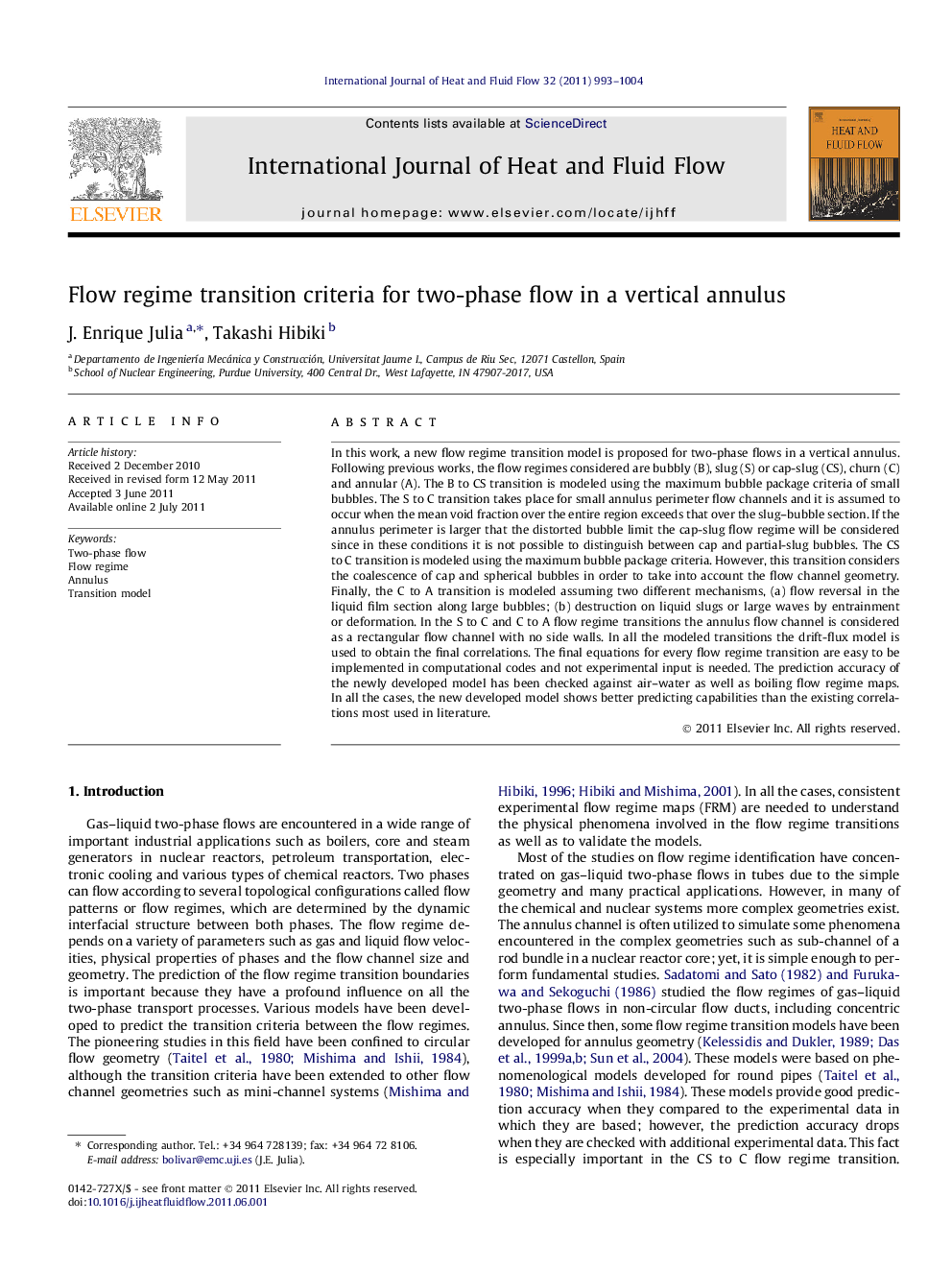| کد مقاله | کد نشریه | سال انتشار | مقاله انگلیسی | نسخه تمام متن |
|---|---|---|---|---|
| 655535 | 1457650 | 2011 | 12 صفحه PDF | دانلود رایگان |

In this work, a new flow regime transition model is proposed for two-phase flows in a vertical annulus. Following previous works, the flow regimes considered are bubbly (B), slug (S) or cap-slug (CS), churn (C) and annular (A). The B to CS transition is modeled using the maximum bubble package criteria of small bubbles. The S to C transition takes place for small annulus perimeter flow channels and it is assumed to occur when the mean void fraction over the entire region exceeds that over the slug–bubble section. If the annulus perimeter is larger that the distorted bubble limit the cap-slug flow regime will be considered since in these conditions it is not possible to distinguish between cap and partial-slug bubbles. The CS to C transition is modeled using the maximum bubble package criteria. However, this transition considers the coalescence of cap and spherical bubbles in order to take into account the flow channel geometry. Finally, the C to A transition is modeled assuming two different mechanisms, (a) flow reversal in the liquid film section along large bubbles; (b) destruction on liquid slugs or large waves by entrainment or deformation. In the S to C and C to A flow regime transitions the annulus flow channel is considered as a rectangular flow channel with no side walls. In all the modeled transitions the drift-flux model is used to obtain the final correlations. The final equations for every flow regime transition are easy to be implemented in computational codes and not experimental input is needed. The prediction accuracy of the newly developed model has been checked against air–water as well as boiling flow regime maps. In all the cases, the new developed model shows better predicting capabilities than the existing correlations most used in literature.
► Flow regime transition model is presented for two-phase flows in a vertical annulus.
► The transition criteria is easy to be implemented in computational codes.
► Final equations do not need experimental input.
► New developed model shows better predicting capabilities than existing correlations.
► New developed model shows good predicting capabilities in boiling flow.
Journal: International Journal of Heat and Fluid Flow - Volume 32, Issue 5, October 2011, Pages 993–1004